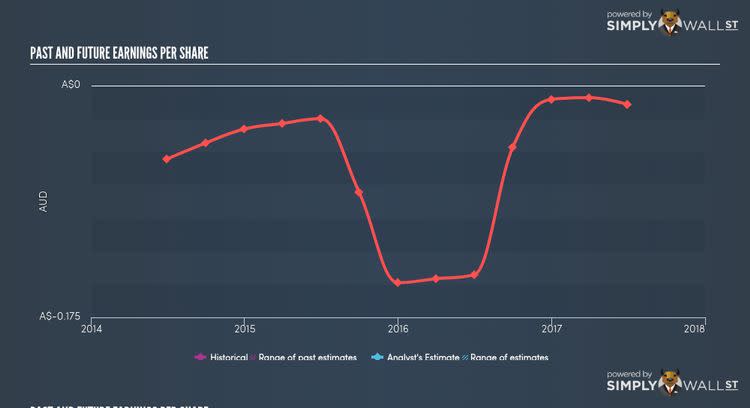Does Tawana Resources NL’s (ASX:TAW) CEO Pay Compared Well With Peers?

Leading Tawana Resources NL (ASX:TAW) as the CEO, Mark Calderwood took the company to a valuation of AUDA$201.31M. Understanding how CEOs are incentivised to run and grow their company is an important aspect of investing in a stock. This is because, if incentives are aligned, more value is created for shareholders which directly impacts your returns as an investor. I will break down Calderwood’s pay and compare this to the company’s performance over the same period, as well as measure it against other Australian CEOs leading companies of similar size and profitability. View our latest analysis for Tawana Resources NL
What has TAW performance been like?
Performance can be measured based on factors such as earnings and total shareholder return (TSR). I believe earnings is a cleaner proxy, since many factors can impact share price, and therefore, TSR. Recently, TAW produced negative earnings of -A$6M . However, this is an improvement on prior year’s loss of -A$9M, which may signal a turnaround since TAW has been loss-making for the past five years, on average, with an EPS of -A$0.07. As profits are moving up and up, CEO pay should represent Calderwood’s valued-adding activities. In the same year, Calderwood’s total compensation fell by more than half of the prior year’s level, to A$196,546. Although I couldn’t find information on the breakdown of Calderwood’s pay, if some portion were non-cash items such as stocks and options, then variabilities in TAW’s share price can move the real level of what the CEO actually receives.
What’s a reasonable CEO compensation?
Though there is no cookie-cutter approach, as remuneration should be tailored to the specific company and market, we can estimate a high-level yardstick to see if TAW deviates substantially from its peers. This exercise can help shareholders ask the right question about Calderwood’s incentive alignment. Typically, an Australian small-cap is worth around $140M, creates earnings of $10M, and pays its CEO at roughly $500,000 per year. Usually I would use earnings and market cap to account for variations in performance, however, TAW’s negative earnings lower the usefulness of my formula. Analyzing the range of remuneration for small-cap executives, it seems like Calderwood is paid aptly compared to those in similar-sized companies. Overall, though TAW is loss-making, it seems like the CEO’s pay is sound.
What this means for you:
Are you a shareholder? CEO pay is one of those topics of high controversy. Nonetheless, it should be talked about with full transparency from the board to shareholders. Is Calderwood remunerated appropriately based on other factors we have not covered today? Is this justified? As a shareholder, you should be aware of how those that represent you (i.e. the board of directors) make decisions on CEO pay and whether their incentives are aligned with yours. To find out more about TAW’s governance, look through our infographic report of the company’s board and management.
Are you a potential investor? Whether Calderwood is over or underpaid should not be a deciding factor whether or not you invest in TAW. However, the way the company is governed and policies, such as remuneration, are structured, are important considerations for an investor. The best place to start is to understand how well TAW is placed financially. To research more about these fundamentals, I recommend you check out our simple infographic report on TAW’s financial metrics.
PS. If you are not interested in Tawana Resources NL anymore, you can use our free platform to see my list of over 50 sustainable companies producing great returns.
To help readers see pass the short term volatility of the financial market, we aim to bring you a long-term focused research analysis purely driven by fundamental data. Note that our analysis does not factor in the latest price sensitive company announcements.
The author is an independent contributor and at the time of publication had no position in the stocks mentioned.

